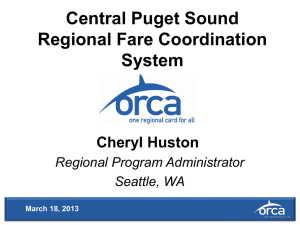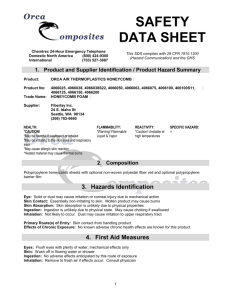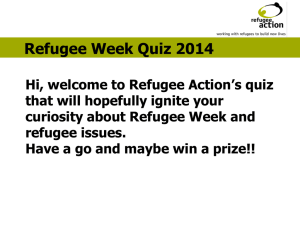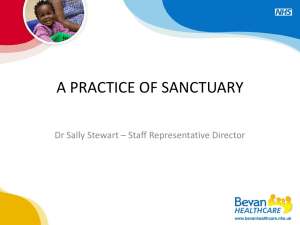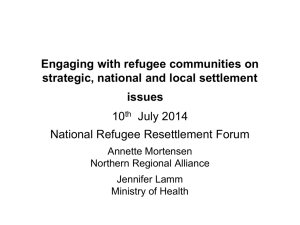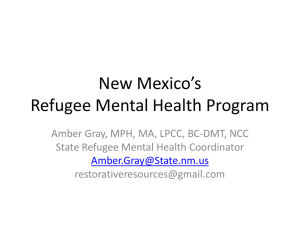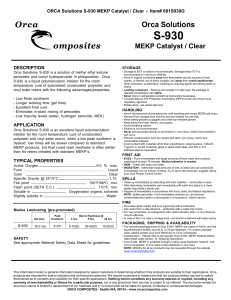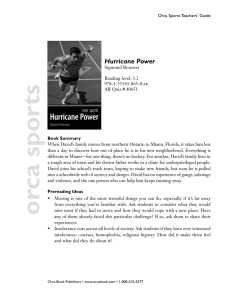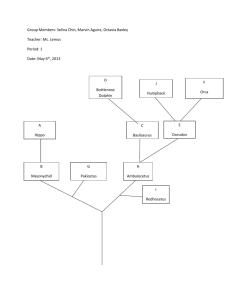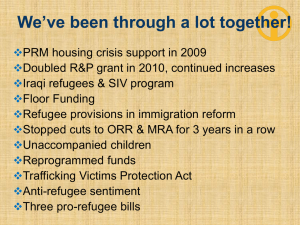New Skills for New Arrivals - Association of Travel Instruction
advertisement
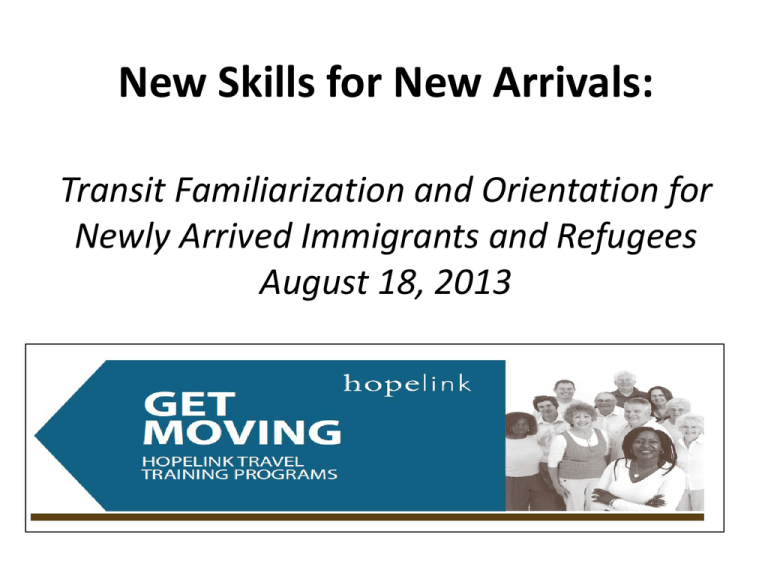
New Skills for New Arrivals: Transit Familiarization and Orientation for Newly Arrived Immigrants and Refugees August 18, 2013 Highest refugee populations admitted to the U.S. by country (October 2012- February 2013): Iraq: 7,506 Burma (Myanmar): 7,011 Bhutan: 3,458 Somalia: 2,814 Cuba: 1,529 Democratic Republic of Congo: 1, 167 Iran: 1, 136 Eritrea: 982 Sudan: 916 • Source: Worldwide Refugee Processing Systems (WRAPS), Department of State, March 2013 Refugee Arrivals Reporting period: October 1 2012- February 28,2013 Nationwide Statistics: 13,025 cases 28,079 individuals Washington State: 425 cases 943 individuals Other state statistics: California: 1,285 cases 2,611 individuals Illinois: 501 cases 1,111 individuals Michigan: 889 cases 1,986 individuals Texas: 1,382 cases 3,032 individuals Nepali family at Pike Place Market, Seattle, June 2013 Ride Around the Sound (2011-2013) • 337 individuals received “on the bus” training by Hopelink Travel Programs on 31 Ride Around the Sound excursions. • Participating Refugee Resettlement Agencies: – International Rescue Committee (IRC) – World Relief – Jewish Family Service • Other Refugee and Immigrant Service Agencies: – Housing Providers • Seattle, Renton and King County Housing Authorities • Providence Housing and Catholic Community Services – ESL programs • St. James Cathedral, Hopelink • Green River and Highline community colleges Services Provided by Hopelink • • • • • • • • Pre-trip information and orientation Day-of trip planning $10 value on re-loadable ORCA card for fares Interpreters for Pre-Trip and Day-of if needed Hopelink staff-led excursions Follow up resources for clients and staff Client surveys Repeat excursions if requested IRC Clients Learning to Ride Light Rail Seattle Public Health Trip March 2013 World Relief Clients at Pike Place Market May 2013 ESL Class Trip to the Mall in July 2013 ESL Students on Ferry to Bainbridge Island August 2013 Vietnamese, Chinese & Russian Seniors Out in the Community Spring 2013 Tools & Tips for Getting Around Puget Sound How to Pay Where to find Bus fares • A sign inside the bus. • Fare questions? Ask the driver. • Use exact change if paying in cash. ORCA CARD (One Regional Card for All) •ORCA card works like cash or bank card. •Buy Card for $5, then add money to ride busses, ferries and trains. ORCA Card: How to Use BUS: Tap ORCA card on the reader inside the bus to pay. ORCA Card: How to Use LIGHT RAIL/TRAIN: Tap the ORCA card on the yellow card reader that on the platform before you get on the train and after you exit. ORCA Card Reader: Fare paid (1 beep + ) light) Fare paid, money low (2 beeps + Tapped card wrong (3 beeps + No money ( 5 beeps + ) lights) ) Fare inspection on some transit modes •If you do not tap card or purchase a ticket, you may get a $124 fine. • Show your ORCA card or ticket to the fare inspector when asked. Do you receive Medicaid? Using Landmarks for Training & Orientation Challenges • Range of experience among refugee populations in: – Transit Use – Technology Use and Access – Urban Environments – Local or family support – Arrival date in U.S. – English Language ability • Other challenges: – Stress and trauma – Health status or disability – Financial constraints and poverty – Cultural or social norms – On-going English language barriers Resources • Ethnomed • http://ethnomed.org/ A program of the University of Washington Health Sciences Libraries and Harborview Medical Center's Interpreter Services Department/Community House Calls Program (ISD/CHC). “EthnoMed contains information about cultural beliefs, medical issues and related topics pertinent to the health care of immigrants to Seattle or the US, many of whom are refugees fleeing war-torn parts of the world.” • Refugee Council U.S.A. • http://rcusa.org/ RCUSA is a coalition of organizations committed to welcoming and protecting refugees. “Enhance the capacity, voice and effectiveness of member organizations to advance a mutually agreed upon common agenda of protection and meaningful welcome. Advocate globally for the protection, integration and rights of refugees and other populations who are forcibly displaced and at risk. Build excellence in the U.S. refugee resettlement program through the collaboration of member organizations.”
